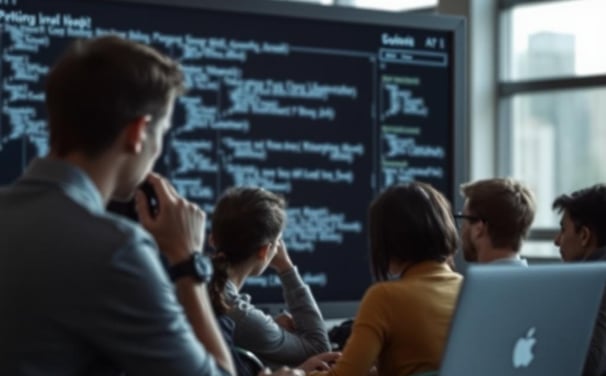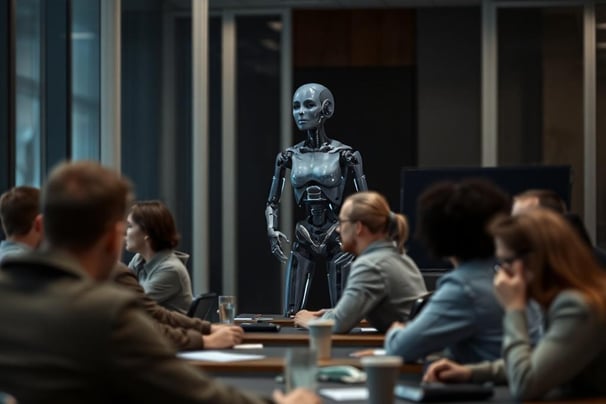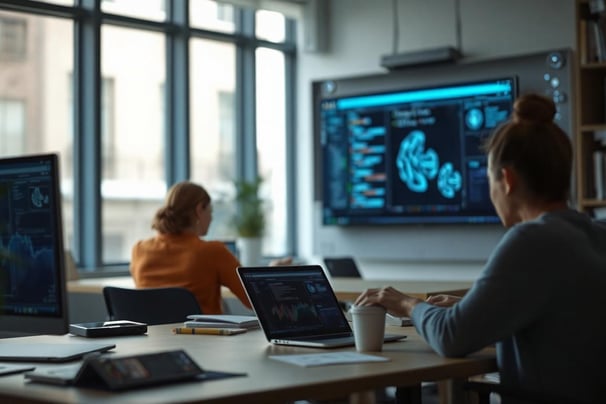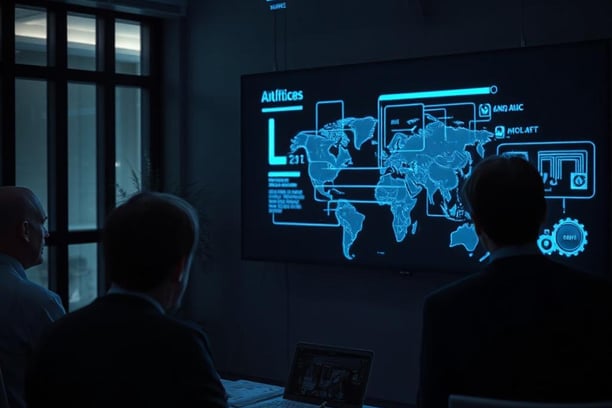Our Deen, Prof. Dr. Irina Bezruchenko
Structured Learning and Critical Thinking Founded in Gymnasium
My academic path began at the Gymnasium, a rigorous secondary school environment that fostered not only a broad intellectual curiosity but also a structured approach to learning. The curriculum, which spanned humanities, natural sciences, mathematics, and languages, equipped me with critical thinking skills and an analytical mindset. This foundation laid the groundwork for tackling the complex, interdisciplinary challenges I would encounter in bioinformatics, robotics, and artificial intelligence.
During this time, I honed key traits such as:
Analytical Thinking: The ability to dissect complex problems into their component parts.
Discipline and Focus: The persistence required to sustain deep intellectual engagement over time.
Intellectual Openness: A curiosity that drove me to explore a wide range of subjects, fueling my future interdisciplinary work.
Bachelor’s in Applied Bioinformatics and Robotics: Bridging Biology and Technology
Pursuing a Bachelor’s degree in Applied Bioinformatics and Robotics allowed me to explore two rapidly evolving fields. Here, I developed proficiency in applying computational techniques to biological data while mastering the design and application of robotic systems. This interdisciplinary education sharpened my ability to integrate biology with engineering, fostering a skill set that bridges computational biology and mechanical systems.
Significant skills and outcomes from this phase include:
Multidisciplinary Integration: Balancing biological complexity with the software and hardware demands of robotics.
Technical Expertise: Gaining proficiency in programming languages and machine learning, with a focus on their application to biological systems.
Innovation: Developing novel solutions by blending insights from both biology and engineering.
Doctorate in Artificial Intelligence and Synaptic Building: Advancing AI and Neural Networks
My doctoral research in Artificial Intelligence and Synaptic Building marked a pivotal moment in my academic career. Focused on creating artificial neural connections that mimic synaptic plasticity, this work bridged the domains of neuroscience, AI, and robotics. Through interdisciplinary collaboration, I advanced models that contribute to both theoretical and practical developments in machine learning and neuro-inspired computing.
Key achievements during this period:
Advanced AI Models: Development of models that simulate synaptic plasticity, advancing the field of deep learning and neural network optimization.
Interdisciplinary Research: Extensive collaboration with experts across neuroscience, cognitive science, and robotics.
Publications: High-impact publications that contributed to AI and neural simulation research, with practical applications in medicine and cognitive computing.
Professional Experience: Leading at the Intersection of Academia and Industry
Transitioning into professional roles allowed me to apply my academic expertise to real-world challenges. As an AI Research Scientist and Robotics Engineer, I led projects that leveraged AI for autonomous learning and created intelligent robotic systems for healthcare and biotechnology. My role as a consultant further expanded my ability to integrate AI and robotics into industry solutions, guiding innovation across multiple sectors.
Key professional roles include:
AI Research Scientist: Developed autonomous AI systems with applications in robotics and healthcare.
Robotics Engineer: Created intelligent systems that interface with biological systems, such as medical diagnostics.
Consultant: Provided strategic guidance to tech companies on AI integration, enhancing product development.








Collaborative Research and Leadership: Pioneering Cross-Disciplinary Work
Collaboration has been a cornerstone of my career, and I have consistently worked across disciplines to drive innovation. My partnerships with neuroscientists, engineers, and biologists have yielded significant advancements in AI and robotics, particularly in understanding and replicating synaptic behavior in artificial systems.
Key collaborations:
Neuroscience and AI: Advanced AI models that simulate human cognition, contributing to both theoretical and applied research in synaptic behavior.
Cross-Disciplinary Innovation: Engaged in projects that integrate cognitive science, biology, and engineering to push the boundaries of machine intelligence.
Vision and Future Directions: A Lifelong Commitment to Learning and Innovation
Throughout my academic and professional journey, I have consistently pursued innovation at the intersection of AI, robotics, and bioinformatics. As a visionary leader, I remain committed to driving interdisciplinary research and exploring new frontiers in these fields. My passion for collaboration, coupled with a strong foundation in structured learning, positions me to continue contributing to the advancement of technology and knowledge in academia and industry alike.




Academic and Professional Journey: Bridging Disciplines and Leading Innovation
AI Innovations
Showcasing our cutting-edge AI solutions for strategic business success.












Innovation
EXCELENCE
EXPERTISE
Empowering businesses through cutting-edge AI solutions.
Expertise
Web Shop: webshop@gedebusch.com
Public Relations: pressestelle@gedebush.com
OFFICE OF COMMUNICATION, EVENTS AND ALUMNI
DE +49-15175232323
VIA PHONE
Our team of advisors is available from Monday to Friday, 9.00 a.m. to 6.00 p.m. We look forward talking to you!
We look forward talking to you!
AT +43-68864365264
ZYRRYZ® is a Registered Trade Mark of the German Delta Business School 2016-2024 ©
Public Relations: pressestelle@gedebush.com
Public Relations: pressestelle@gedebush.com
General Infos: info@gedebusch.com
NL +31-68864365264
LU +352-621526562
NL +31-68864365264
NL +31-68864365264
